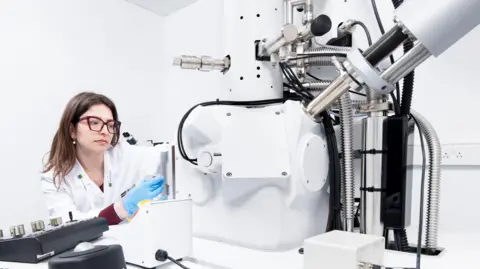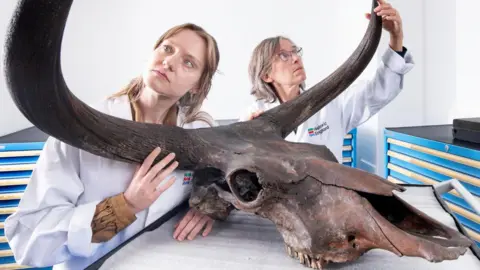Labs reopen to study archaeological treasures
 Historic England
Historic EnglandThe laboratories used to carry out research on some of the country's most significant heritage sites have reopened after a refit.
The Fort Cumberland Laboratories in Portsmouth have been equipped with tools to help understand how artefacts are made and how best to preserve them.
The site has been central in projects ranging including the re-excavation of Silbury Hill in Wiltshire and studying human remains found at Hadrian's Wall.
Historic England said the site "plays a vital role in telling the stories of England's past".
Specialist work has been carried out at Fort Cumberland for the past 75 years.
The team has helped conserve artefacts from the 18th Century Dutch warship the Rooswijk off the Kent coast and analysed human remains at Birdoswald Roman Fort Cemetery at Hadrian's Wall in Cumbria.
The refit of the laboratories has involved new heating and cooling systems.
New equipment includes a scanning electron microscope and energy dispersive spectrometry system (Sem-Eds) for analysing historic materials.
It allows for imaging of very small features such as nanocrystals, as well as mapping the chemical composition of a wide range of materials.
 Historic England
Historic EnglandThe system can be used to analyse dental wear in archaeological remains, the causes of bone discolouration, insect remains and historic building materials.
Duncan Wilson, chief executive of Historic England, said: "The amazing work of our archaeologists and heritage scientists is helping to uncover the hidden stories that connect us to our distant past.
"This new investment in Fort Cumberland's laboratories will enhance our research and conservation work, and improve access to our expertise, equipment and collections, helping more people to enjoy and care for their heritage."
You can follow BBC Hampshire & Isle of Wight on Facebook, X (Twitter), or Instagram.
